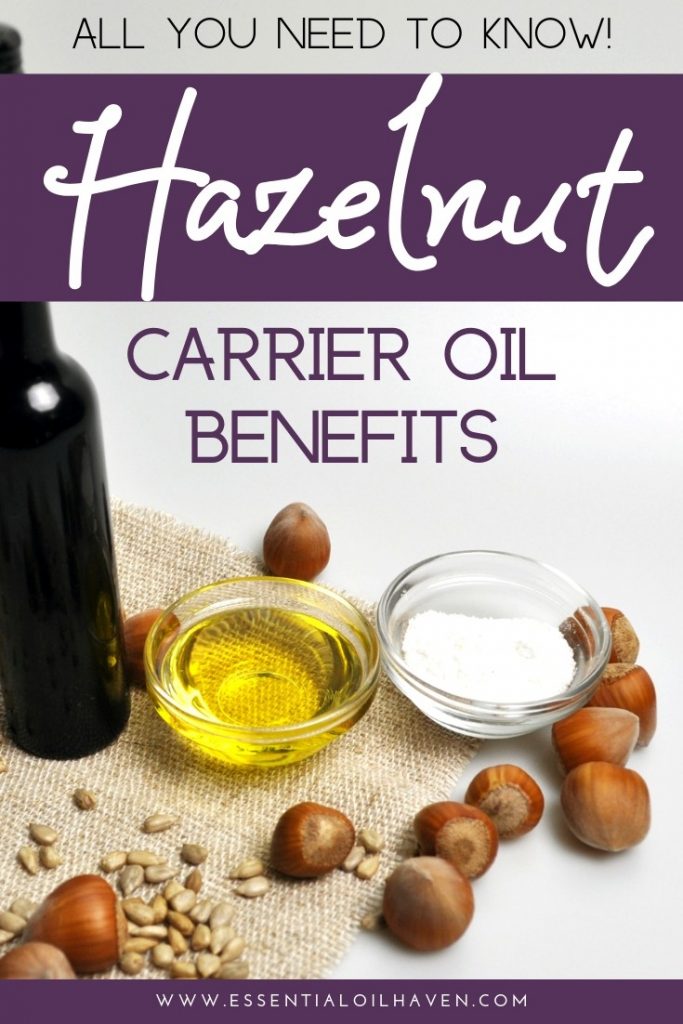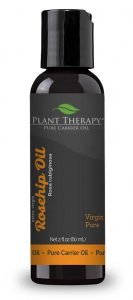
Carrier oils do not alter the properties of the essential oil in use. In fact, carrier oils have benefits far beyond serving as base oils for the applied essential oils. In and of themselves, carrier oils also add their own soothing properties for healthier skin. Also called ‘base oils’, carriers are fatty oils usually high in vitamins A, D and E.
Base oils usually come with a light scent, or no scent at all, which again, makes them perfect to blend with essential oils.
This post contains affiliate links, which means if you make a purchase through these links, I may receive a small commission at no extra cost to you. Read my full disclosure policy here.
Carrier oils are extracted from nuts, seeds or kernels of plants. Given the range of these oils available, it might become a rather difficult decision to choose the right carrier oil. Most often, the emphasis is placed on the essential oil being used and the unique properties and nutrients of each individual type of carrier oil can go unnoticed. It is important that each type of carrier oil is understood for its own applicability to get the maximum out of it.
This article focuses on Hazelnut carrier oil benefits and presents the readers with all the important facts and details to help make more informed choices about whether or not Hazelnut carrier oil is a good choice for them.
What is Hazelnut carrier oil?
Considered as a highly unsaturated oil, Hazelnut oil (botanical name: corylus avellana) acts as a great carrier oil, enhancing the properties of the essential oil it is used with. A breakdown of some of its important details is presented below:
- Its natural content consists of vitamins A, B, D, E, minerals, proteins, essential fatty acids – oleic acid and a small amount of linoleic acid. (1)
- The oil is yellow brown or light golden/yellow in color and is almost odorless except for slight nutty scent to it.
- It is also a relatively light oil and consequently easily, albeit slowly absorbed. It is due to this characteristic of Hazelnut oil that it is said to suit oily skin (2) and can be used to treat acne prone skin (3).
- The oil has a limited shelf life of 1 year, on average, a relatively shorter shelf life. However, some suggest the oil can last longer. In any case, it is recommended that Hazelnut oil is kept in a cool place, avoiding direct sunlight and refrigerated once opened.
Where do Hazelnuts Come From?

Hazelnuts
Hazelnuts are cultivated across Europe and also Asia Minor. Turkey is the world’s largest producer of hazelnuts (4), followed by Italy, Spain and the United States. These dark brown nuts are more than just a sweet tasting snack; besides ending up in our confectionery and other food items, Hazelnuts continue to offer nutritional value even when used for “just” their oil.
Growing
Most desirable weather conditions for growing hazelnuts are cool summers and moist winters. Moist conditions generally work best for the hazelnut plant. It takes at least 7 years on average, from the time planted, for the Hazelnut tree to become completely fertile and fruitful. (5)
Harvesting and Drying
It is usually in late winters that the Hazelnut tree starts to blossom, which continues until early spring. After blossoming, it takes an entire summer for the nuts to fully ripe. Harvesting begins in the months of September and October. After being picked, Hazelnuts are dried for over a period of 2 to 4 weeks. A food dryer can speed up the process and at the temperature of 32 – 40 C, nuts are expected to be completely dried within 2 to 4 days. (5)
Hazelnuts dried and ready for consumption can be easily distinguished from fresh nuts. If the nut easily rattles inside the shell upon shaking, or if the shell is easy to break, the nut is ready! (6)
Extraction
If Hazelnuts have been dried properly, they contain no more than 10% moisture for extraction purposes (6). Hazelnut Oil is then extracted through a method called cold pressing, from the nuts after the shells have been removed. This method helps preserve aroma and nutritional benefits. The oil is then further refined into the Hazelnut carrier oil that consumers buy.
Most hazelnut oils found online come from Italy, Turkey, Spain, the United States, Brazil, Greece, and the Ukraine.
Hazelnut Oil Benefits

- Makes for good massage oil: Among Hazelnut oils’ most common uses is aromatherapy and massage therapy. A well balanced Hazelnut oil massage on any given day helps relieve stress, both mental and physical. With its therapeutic qualities, hazelnut oil helps in relaxing the nerves and nourishing the capillaries (3). Start with one of these easy DIY massage oil recipes here.
- Helps treat damaged hair: Hazelnut oil is considered great for hair treatments and DIY hair products such as shampoos. It works especially well for colored ,treated hair, reinstating nutrients, reducing static by working as a conditioner and also helping with retaining color (7). Overall, it is a great agent for damage reduction and for strengthening hair.
- Ideal for skin care products: With all its qualities, it is naturally an important ingredient for many skin care products in general, lending itself as great base oil for packs, skin care preparations, soaps, creams, as well sun creams. With a high level of vitamin E, Hazelnut oil works to prevent damage from harmful sun rays while also working as an antioxidant (3). It is also used in various cosmetic products, whether they’re all-natural skin care products or not.
- Caters to all skin types: Although Hazelnut oil works great for all skin types, it is considered to work particularly well for dry skin, and sensitive and mature skin types. It is the fatty acids present in the oil that helps to best maintain the outer layer of the skin (3). These healthy fatty acids are naturally not generated in our bodies and with the use of Hazelnut oil, they can be maintained very well.
What Makes Hazelnut Oil a Good Carrier Oil?

Rosehip Oil from Plant Therapy
Get It Here
With all its benefits and nutritional content, Hazelnut oil has immense value as a carrier oil. Its skin softening properties make it an ideal carrier oil, especially when being applied to rough, irritated or dry skin – giving it an instant softening feel.
Hazelnut oil also has the characteristic of being non-greasy, absorptive, and penetrating, as well as stimulating to the blood circulation (8). This helps in skin tightening, skin toning, and cell regeneration. It is these very qualities that make it a great contender for a carrier oil of choice.
Its astringent qualities are better enhanced when it is used in combination with other oils, particularly Rosehip Oil or Avocado oil (another great choice for carrier oil).
Last but not least, using a carrier oil enhances the properties of the essential oils in your mix by stacking up the benefits of your tincture with the carrier oils’ additional nutritional elements.
How to Use Hazelnut Carrier Oil
Being a neutral oil and having the advantage of working for all skin types, Hazelnut oil can be applied by itself for cleansing purposes an anti-ageing agent, for collagen production and to moisturize dry skin, especially during the winters. However, for those willing to go the extra mile and add more nutritional value to their skin care treatment, we suggest our signature recipe combining three base oils with four different types of essential oils.
When to avoid Hazelnut Oil?
Although there are no known side effects of using Hazelnut oil, precaution is suggested for those who are allergic to all kinds of nuts including of course, hazelnut itself.
Even though there is not much research on its applicatory uses, the precautionary measure is still strongly suggested.
In any case, before application, it is always better to run a skin patch test before going for full application, and this holds for Hazelnut Oil as well. A skin patch test is normally conducted by applying a couple of drops of oil inside of your forearm and leaving it for 24 hours covered with a bandage. If no inflammation, irritation or any kind of reaction is experienced, the oil should be safe to use. For those that experience reaction should wash off the oil as soon as possible and if the severity of reaction increases or persists, consult with a doctor.
References
(1) Naturally thinking Pure Spa Aromatherapy, n.d. Hazelnut Carrier Oil: https://naturallythinking.com/hazelnut-carrier-oil
(2) NHR Organic Oils, n.d. Organic Hazelnut Oil (Corylus avellana): https://www.nhrorganicoils.com/products.php?id=2900
(3) The Ananda Apothecary, 2015. 8 Things You Never Knew About Hazelnut Oil & Why It’s Amazing for Everything! https://www.anandaapothecary.com/ananda-apothecary-news/8-things-you-never-knew-about-hazelnut-oil-why-its-amazing-for-skin
(4) Wikipedia, n.d. Hazelnut: https://en.wikipedia.org/wiki/Hazelnut
(5) Grant, A., n.d. Hazelnut Picking: How And When To Harvest Hazelnuts: https://www.gardeningknowhow.com/edible/nut-trees/hazelnut/when-to-harvest-hazelnuts.htm
(6) Sajem, Y., n.d. How to Dry Hazelnuts. https://www.ehow.com/how_5887837_dry-hazelnuts.html
(7) The Idle Man, 2018. Hazelnut Oil: What is it & What are the Benefits: https://theidleman.com/blogs/grooming/hazelnut-oil-what-is-it-what-are-the-benefits
(8) IvyRose Holistic, n.d. Hazelnut Oil. https://www.ivyroses.com/Define/Hazelnut_Oil




Leave a Reply